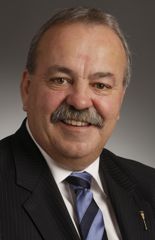 Alberta took its time installing a distracted driving law — it’s the eighth Canadian province to do so — but the new rules clearly are among the most comprehensive in North America.
Alberta took its time installing a distracted driving law — it’s the eighth Canadian province to do so — but the new rules clearly are among the most comprehensive in North America.
The new Alberta distracted driving law went into effect next Thursday, Sept. 1. The fine is $172 (total).
(This post updated Sept. 1)
In addition to banning text messaging, emailing and the use of handheld cell phones for drivers, the law prohibits other use various other handheld electronic communications devices, grooming, non-commercial use of CB radios, GPS data entry, writing, drawing, sketching, reading of printed materials and the use of certain video screens (TVs, DVDs).
Use of cell phones with hands-free attachments is permitted, although that wasn’t a given: Last fall’s debate over Bill 16 focused on whether hands-free phone use should be allowed at all.
“This legislation is another step forward in our traffic-safety efforts and an important addition to our overall traffic safety strategy,” Minister of Transportation Luke Ouellette (pictured) said a week before enforcement began. “I am confident this new law, which is practical and enforceable, will help to keep Albertans safer while on the road — and that’s something we can all support.”
Enforcement of the law springing from Alberta’s Traffic Safety (Distracted Driving) Amendment Act (of 2010) began in time for the Labor Day holiday weekend. There was no grace period.
The province calls the new law “the most comprehensive distracted driving legislation in Canada.” Ouellette says the law represents “a bold approach (that) goes beyond restricting cell phones and deals with the broader issue of distracted driving.”
In addition to the typical vehicles found on highways, the act applies to farm vehicles and bicycles.
The law gives law officers flexibility in citing offenders. Tougher penalties can be assessed under the “driving carelessly” provisions of the existing Traffic Safety Act — a $402 fine and 6 demerit points against the offender’s license.
“The law is intended to be practical, effective and enforceable,” the Transportation Department says. It uses these examples: “Having a simple snack is allowed, but eating a meal from a plate with a knife and fork is not allowed. Glancing at a map is allowed, but reading a book or newspaper is not.”
The inclusion of personal grooming is unusual in Canada and the U.S. While frequently cited (by dubious lawmakers) during distracted driving debates in North America, this is one of the few times a grooming-while-driving ban actually become law.
Traveling with pets is not specifically banned under the new law.


Are you allowed to smoke while driving?
The law should go a lot further to assure everyone the maximum safety while driving. What happened to the yearly safety inspection on vechiles. Motorists driving with bad brakes, no rear mirror, or a older vechiles that has older parts that cause it to break down on a highway cause accidents. What is the law makers doing about this.
BTW … who eats with a knife and fork while driving? Reading a map is just as distracting as a book! Snacks need to be unwrapped etc … which causes just as much distraction. A comprehensive law that does not have all these loop holes and deals with all safety issues is what will truly reduce fatalities on our roads.
For example, the issue of pets in cars has not been addressed. Motorists with dogs hanging out the window or behind the steering wheel or simply jumping around in the back seat is a huge distraction. All of this needs to be dealt with; not only cellphone chatting or application of lipstick.
Why, of why, don’t they actually do the job of banning distracted driving? Banning only hand-held phones is ludicrous since every study ever conducted proved there is no difference between talking on a hand-held or hands-free device.
They also dropped the ball on reading matter. It’s okay to read a map but not a book? I fail to see the difference.
Maybe these laws are just for show and not for safety.